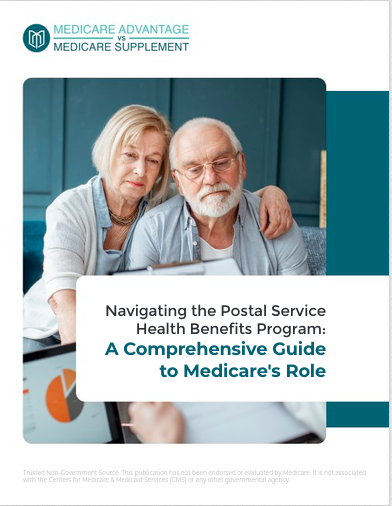Key Takeaways
-
Turning 65 does not automatically start your Medicare benefits—you must actively enroll unless you qualify for automatic enrollment based on specific criteria.
-
Timing matters: delaying enrollment without having other qualifying coverage can result in penalties and delayed coverage.
Understanding What Happens at Age 65
When you turn 65 in 2025, you become eligible for Medicare. But eligibility doesn’t mean enrollment happens on its own. For many people, Medicare enrollment requires action. Whether or not you need to do anything depends on your situation—your work status, your current health insurance, and even your Social Security status.
If you’re already receiving Social Security or Railroad Retirement Board benefits at least four months before turning 65, you are typically enrolled in Medicare Part A and Part B automatically. Everyone else needs to sign up themselves.
The Medicare Enrollment Period You Need to Know
Your Initial Enrollment Period (IEP) is the first major window you’ll get to sign up for Medicare. It includes:
-
3 months before the month you turn 65
-
The month of your 65th birthday
-
3 months after your birthday month
That gives you a 7-month window. But acting early—preferably during the three months before your birthday—ensures your coverage starts the month you turn 65. Enrolling later may lead to delays in when your coverage begins.
Not Retiring at 65? Here’s What You Need to Do
Working past 65 is common. If you have health insurance through your or your spouse’s current employer and the employer has at least 20 employees, you may be able to delay Medicare Part B without penalty.
However, you must:
-
Confirm your employer coverage is creditable—meaning it’s as good as Medicare.
-
Contact the employer’s benefits administrator to verify this in writing.
If your employer coverage is creditable, you can delay Part B and avoid the monthly premium until you retire or lose that coverage.
Once that happens, you get a Special Enrollment Period (SEP) that lasts 8 months. During that time, you can enroll in Medicare without facing a late enrollment penalty.
What About Medicare Part A?
Medicare Part A, which covers hospital insurance, is often premium-free if you or your spouse worked and paid Medicare taxes for at least 10 years. Many people choose to sign up for Part A at 65 even if they’re still working.
But be cautious:
-
If you have a Health Savings Account (HSA), enrolling in Part A disqualifies you from making further contributions.
-
You should stop HSA contributions six months before enrolling in Part A to avoid tax penalties, since Medicare Part A is retroactive for up to six months.
Enrolling in Medicare When You’re Not Automatically Signed Up
If you’re not automatically enrolled, you’ll need to sign up during your IEP. Here’s how:
-
Online: Use the Social Security website to apply for Medicare.
-
Phone: Call Social Security and enroll over the phone.
-
In person: Visit your local Social Security office.
You’ll need to actively enroll in both Part A and Part B unless you choose to delay Part B due to other coverage.
If You Miss Your Enrollment Window
If you don’t sign up during your IEP and don’t qualify for a Special Enrollment Period, you’ll have to wait for the General Enrollment Period (GEP):
-
January 1 to March 31 each year
-
Your coverage begins the month after you enroll
Missing your IEP can lead to:
-
Late enrollment penalties
-
Gaps in coverage
The Part B penalty is particularly long-lasting—it increases your premium by 10% for every 12-month period you delayed enrolling without creditable coverage. This penalty continues for as long as you have Medicare Part B.
Understanding Other Medicare Parts
Medicare Part D
If you want prescription drug coverage, you can enroll in a standalone Part D plan or choose a Medicare Advantage plan that includes drug coverage. But just like Part B, delaying Part D without other creditable drug coverage triggers penalties.
To avoid the penalty:
-
Make sure you either enroll in a Part D plan when first eligible
-
Or confirm your employer or union plan offers creditable drug coverage
Medicare Advantage (Part C)
Medicare Advantage plans are an alternative to Original Medicare (Parts A and B). These plans are offered by private insurance companies approved by Medicare. If you go this route, you must still be enrolled in Part A and Part B.
You can enroll in Medicare Advantage during your Initial Enrollment Period or during the annual Medicare Open Enrollment (October 15 to December 7). In 2025, any changes you make during Open Enrollment take effect on January 1, 2026.
Common Mistakes to Avoid When Turning 65
-
Assuming automatic enrollment: Many people think they’ll automatically be enrolled when they turn 65, but that only happens if you’re already getting Social Security or Railroad Retirement benefits.
-
Delaying enrollment without creditable coverage: Waiting to sign up without other qualifying insurance can cost you more over time.
-
Missing your Initial Enrollment Period: If you miss the 7-month window, you may have to wait months for coverage and pay penalties.
-
Enrolling in Part A while contributing to an HSA: Doing so can lead to unexpected tax consequences. Stop HSA contributions at least six months before applying for Part A.
What to Do If You’re Living Abroad at 65
If you’re a U.S. citizen living abroad when you turn 65, Medicare typically won’t cover medical expenses you incur outside the United States. But you still need to think about enrollment:
-
If you plan to return to the U.S., enrolling in Part A might still make sense, especially if it’s premium-free.
-
You can delay Part B and Part D without penalty if you’re covered by a foreign or local insurance plan that is deemed creditable. However, this may require documentation when you eventually return.
When you come back to live in the U.S., you may qualify for a Special Enrollment Period to sign up for Medicare without penalties.
Planning Ahead for a Smooth Transition
Start reviewing your Medicare options at least 6 months before your 65th birthday. This gives you time to:
-
Understand what coverage you need
-
Determine if you’ll be automatically enrolled or need to apply
-
Confirm whether your current insurance is creditable
-
Review how your other benefits, like HSAs, may be affected
Being proactive can help you avoid late penalties and ensure you’re covered when you need it.
When Coverage Actually Begins
If you sign up during the first three months of your Initial Enrollment Period, your coverage starts the month you turn 65.
If you sign up during your birthday month or the three months after, your coverage will be delayed by one to three months.
-
Enrolling in the first 3 months = Coverage starts the month you turn 65
-
Enrolling in the birthday month = Coverage starts the following month
-
Enrolling in the 1st month after = Coverage starts 2 months later
-
Enrolling in the 2nd or 3rd month after = Coverage starts 3 months later
Timing is key.
You Still Have a Role to Play at 65
Reaching Medicare eligibility is a milestone, but it’s not a hands-off process. You still need to make decisions, submit applications, and coordinate with any existing coverage you have.
Failing to act at the right time—or assuming you don’t need to do anything—can lead to costly mistakes. Treat your 65th birthday as a call to action: gather information, verify your status, and make a clear plan.
Make Sure You’re Covered the Right Way
Turning 65 is not the finish line—it’s the start of your Medicare journey. Whether you’re working, retired, or living abroad, your responsibilities don’t stop at just becoming eligible. You need to evaluate your health needs, your existing insurance, and your timeline to enroll.
If you’re unsure about your situation, speak with a licensed agent listed on this website for expert guidance tailored to your needs.









